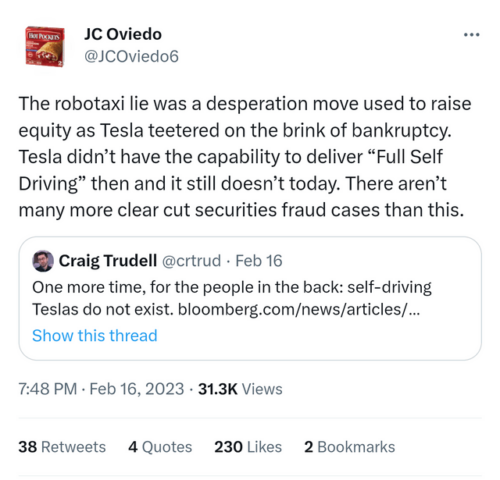Many people have been reporting how a Meatball DeSandwich (bizarrely elected to be Governor of Florida) single-handedly rolled back protections against gun violence.
For example on the 3rd of April 2023 he signed a bill that eliminated permit requirements for carrying concealed weapons. The Meatball says it “goes into effect” officially in July, whatever that means when he already has been arguing that it’s “Constitutional” and therefore went into effect centuries ago.
…the governor has boosted the law, releasing a statement that read “Constitutional Carry is in the books” after he signed it into law.
Books. Haha, get it? Books, in Florida? Everyone knows Florida bans books. They don’t write or read. Who needs to learn that stuff when you can just get a gun and tell others to learn stuff and do all your hard work or you’ll kill them? Hmm, that sure sounds a lot like slavery… but I digress.
Speaking of books, Florida bans local governments from writing gun ordinances. Florida likes preventing safety, especially local safety, if you see what they mean.
Despite recent mass shootings and rising gun violence across the country, DeSantis signed a law in April to further relax firearm regulations in Florida.
Sounds a lot like DeSandwich looked at a gun violence problem and asked how it could be “boosted” most quickly.
Responding to DeSantis’ announcement on Twitter [boosting gun violence], US Rep. Charlie Crist, also running for governor as a Democrat, said, “The last thing Florida needs during a gun violence epidemic is a governor who wants dangerous people carrying guns on the street without so much as a background check.”
If you’re carrying concealed weapons today without a permit in Florida then you are just in alignment with the Meatball by “future proofing” violent “Constitutional” acts that he has been boosting?
Did I get that right?
Giffords Law Center suggests people in Florida no longer have to receive a mandatory background check or take a training course to carry a concealed weapon in public.
So no permit, no background check, no training course?
FOR GUNS?
Kids with guns, lots of guns, shooting at each other in schools that have no books?
Calling himself a “big Second Amendment guy,” he also backed allowing firearms on college campuses.
What a Meatball, not a guy, no?
Guns are the leading cause of death for US children and teens…
Apparently the Meatball has plans for kids even to start carrying guns in the open so that wherever they have any kind of minor dispute it can turn into instant mass casualties and death.
Sounds like just the kind of thing the tourist industry of Florida needs to go out of business.
“Come to Hollywood Beach,” one 911 caller is heard saying. “Please, on the beach. They are shooting out here.” The caller told the dispatcher that someone near him on the beach was “hit.” Another caller reported hearing rapid gunshots and running into a nearby hotel, where she said people were taking cover against a wall. She described hearing three rapid shots, a pause, then two more gunshots, according to the recording.
I can see now all the new Florida advertisements… colorful (bloody) popups for those who search online for hottest airline destinations:
Come to Hollywood Beach. Please, on the beach. They are shooting out here.
If you’re Russian into a hot war zone for holiday… that’s Florida!
The more guns, the more deadly violence with guns.
The indisputable fact is that where there are more guns, there are more gun deaths.
And when restrictions on guns are lowered, there is a rise in crime.
…thousands of guns purchased in 2020 were almost immediately used in crimes — some as soon as a day after their sale.
It’s a pretty easy formula. Apparently getting “boosted” in Florida politics means simply more guns, more crimes, more deaths.
Presidential stuff right there. Meatball campaign slogan?
America is a gun.
To make a finer point, the Meatball has been for months vocally pushing for concealed guns. Now he’s gone completely silent on the topic for days despite a new mass shooting using concealed guns.
There must be some fascinating backroom political posturing and risk analysis going on in Florida right now.
Most Americans say curbing gun violence is more important than gun rights
Of course they say that, but what are they going to do about the lawful evil Meatball with arms impersonating a politician?








